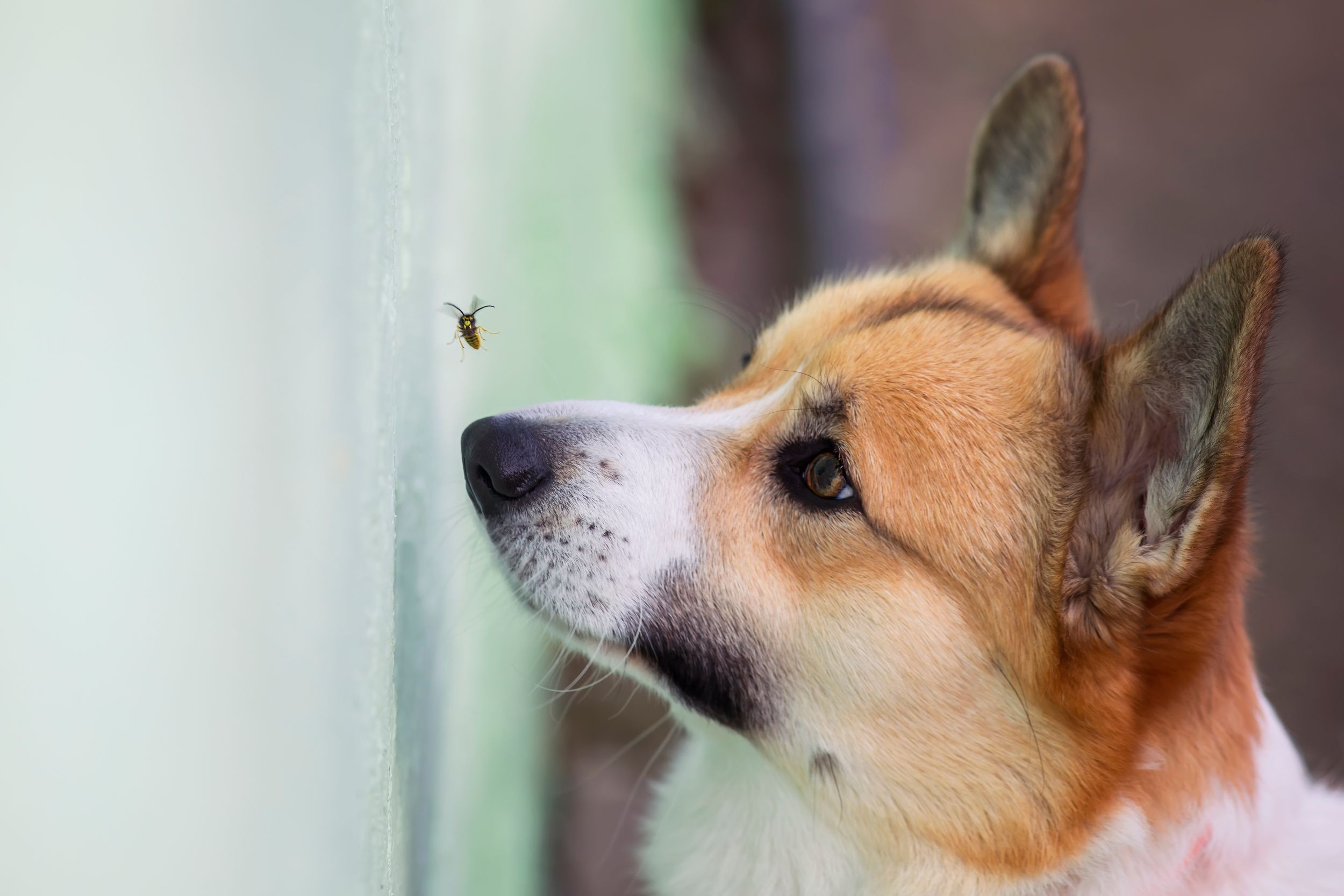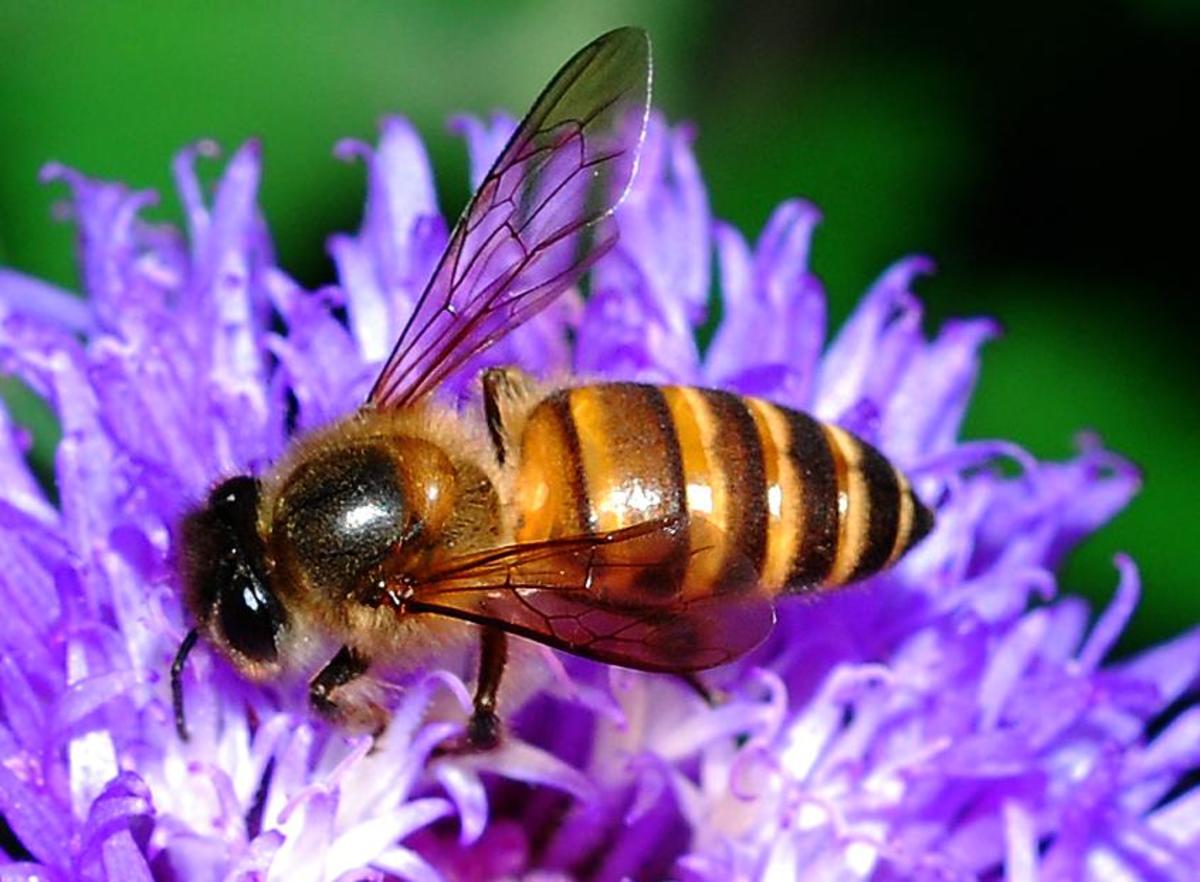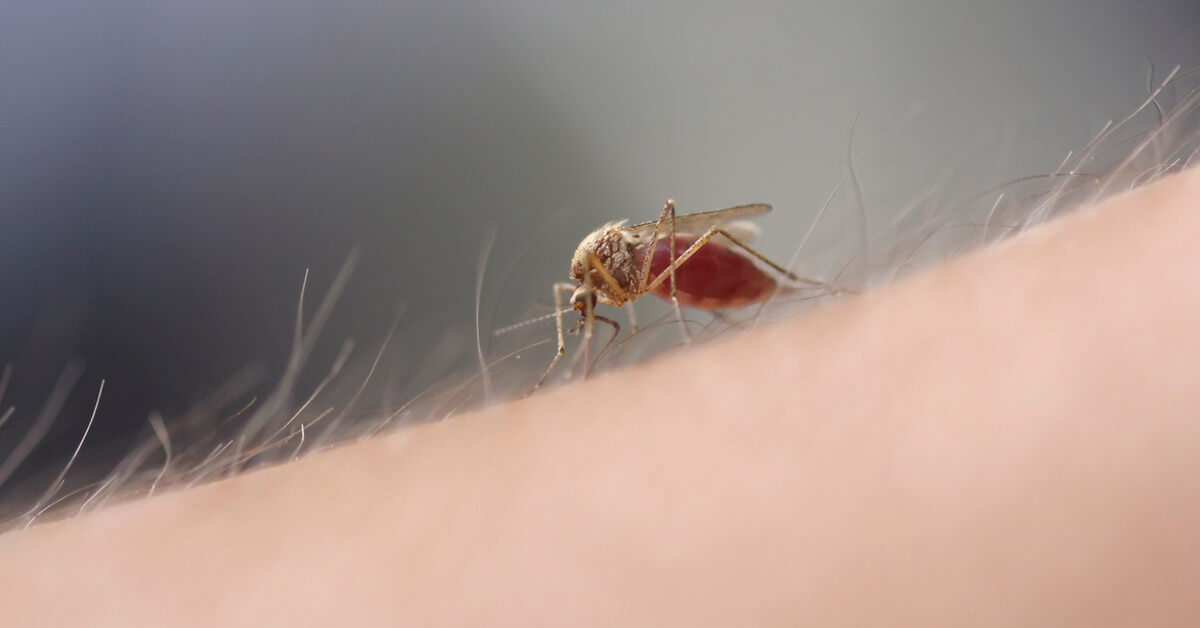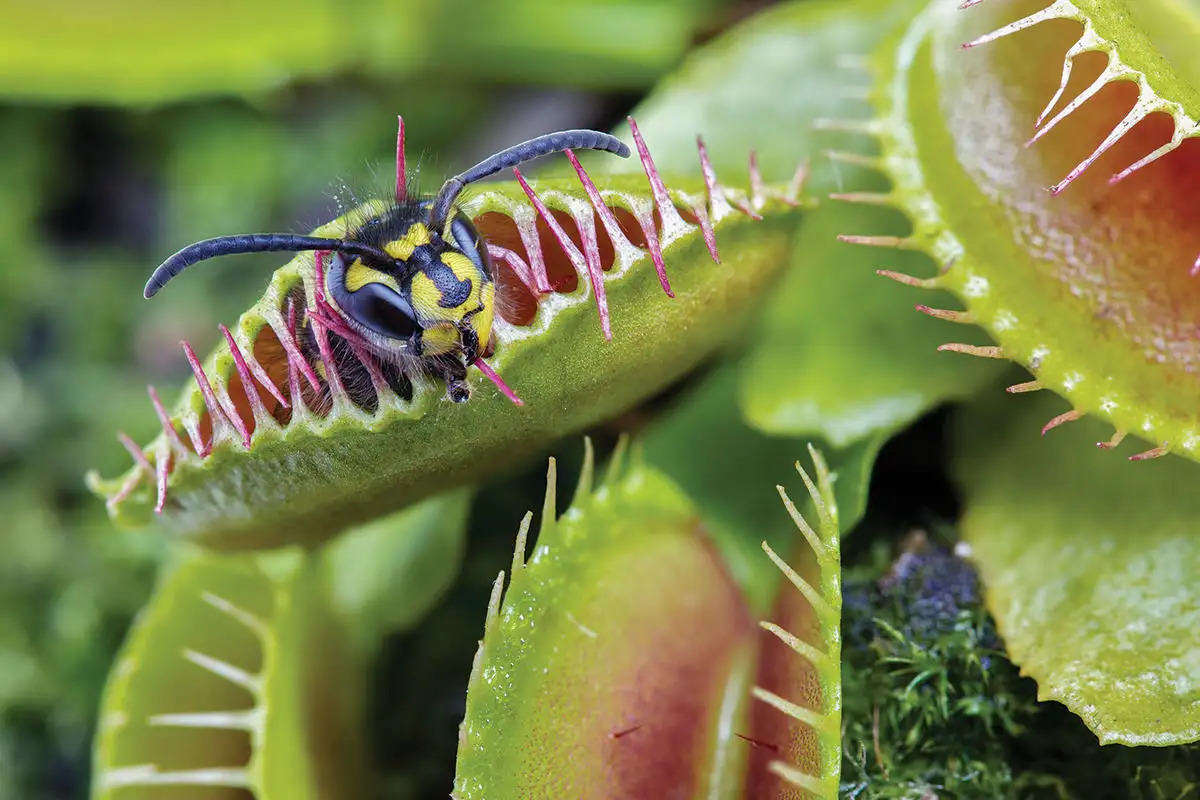Home>Gardening News and Trends>Latest News>Why Does The Corpse Flower Need To Attract Insects To Reproduce


Latest News
Why Does The Corpse Flower Need To Attract Insects To Reproduce
Modified: January 22, 2024
Discover the fascinating story of the Corpse Flower, its unique reproductive strategy, and why it relies on attracting insects for successful reproduction. Stay updated with the latest news on this captivating plant.
(Many of the links in this article redirect to a specific reviewed product. Your purchase of these products through affiliate links helps to generate commission for Chicagolandgardening.com, at no extra cost. Learn more)
Table of Contents
Introduction
The corpse flower, known scientifically as Amorphophallus titanum, is an intriguing and captivating plant that has gained worldwide attention for its unique and peculiar characteristics. This colossal flowering plant, native to the rainforests of Sumatra, Indonesia, is renowned for its overwhelming stench and remarkable size. It has earned its name due to the putrid odor it emits, resembling that of a decaying corpse.
The corpse flower’s distinct and remarkable features have made it a subject of interest for both scientists and nature enthusiasts. One of the most intriguing aspects of this plant is its reproduction mechanism, which relies heavily on attracting insects to facilitate pollination. In this article, we will delve into the fascinating world of the corpse flower and explore why it needs to attract insects to reproduce.
Throughout its lifecycle, the corpse flower undergoes various stages of growth and transformation, each of which plays a crucial role in its reproductive process. Understanding these stages is essential to grasp the significance of insect attraction in the plant’s reproduction.
Join us as we embark on a journey to uncover the secrets of the corpse flower’s reproductive strategy and learn about the crucial role that insects play in its survival and propagation.
Lifecycle of the Corpse Flower
The lifecycle of the corpse flower is a fascinating process that spans over several years. It begins with a tiny seed that develops into a tuber, which remains dormant in the ground for several years before sprouting. The tuber then sends up a single leaf, which can tower several feet high and capture sunlight to provide energy for future growth.
After the leaf stage, the plant enters a dormant period where the leaf withers and dies. This phase can last for months or even years before the next stage begins. When the conditions are just right, the dormant tuber sends up a massive, towering inflorescence, which is the characteristic flower of the corpse flower.
The inflorescence consists of a large spadix and a surrounding spathe, which gives the flower its unique appearance. The spathe has a deep crimson color and opens up, revealing the spadix, which can reach several feet in height. It is during this stage that the corpse flower releases its strong odor, attracting pollinators from afar.
After the flower has bloomed, it starts to wither and collapse, leaving behind slowly ripening berries. The berries contain seeds, which are then dispersed by animals or birds. Once the seeds find suitable ground, they germinate, completing the lifecycle of the corpse flower and starting the process anew.
The lifecycle of the corpse flower is a lengthy and cyclical process, with the plant undergoing stages of growth, dormancy, blooming, and fruiting. These stages are crucial for the plant’s reproductive strategy, ensuring the survival and propagation of its species.
Reproduction in the Corpse Flower
Reproduction in the corpse flower is a remarkable process that relies on attracting insects for successful pollination. Unlike many flowering plants that rely on wind or animals for pollination, the corpse flower has evolved a unique strategy to ensure its reproductive success.
The first step in the reproductive process of the corpse flower is the release of a putrid odor that mimics the scent of rotting flesh. This distinctive smell serves as a powerful attractant to carrion beetles and other insects that are attracted to decaying matter. These insects are drawn towards the flower in search of a potential food source.
As the insects arrive at the inflorescence, they come into contact with the male and female reproductive organs of the flower. The spadix of the corpse flower is covered in tiny male and female flowers, each with their own functions in the reproductive process.
The male flowers produce an abundance of pollen, which is collected by the visiting insects as they explore the flower. These insects inadvertently deposit the pollen onto the female flowers of other corpse flowers they visit, enabling cross-pollination to occur.
The female flowers of the corpse flower contain a receptive stigma, which is where the pollen from the visiting insects will land. Once the stigma is fertilized, it undergoes a process of seed development, leading to the formation of the berries, which contain the plant’s seeds.
It is important to note that not all corpse flowers produce flowers simultaneously, which reduces the chances of self-pollination. By staggering the flowering times, the corpse flower ensures a higher chance of cross-pollination, which increases genetic diversity and promotes the survival of the species.
This fascinating reproductive strategy of attracting insects for pollination ensures that the corpse flower achieves successful reproduction and the continuation of its lineage.
Pollination Mechanism
The pollination mechanism of the corpse flower is a complex and intricate process that relies on the interaction between the flower and certain species of insects. This mechanism ensures the transfer of pollen from the male to the female flowers, enabling successful fertilization and the production of seeds.
When the corpse flower blooms, it releases a strong, foul odor that resembles the scent of rotting flesh. This odor serves as a powerful attractant to carrion beetles, flesh flies, and other insects that are attracted to decaying matter. The insects perceive this scent as a potential food source and are drawn to the flower.
As the insects approach the inflorescence, they come into contact with the male flowers, which are located towards the base of the spadix. The male flowers produce an abundance of pollen, which is sticky and easily adheres to the bodies of the visiting insects.
As the insects explore the flower, they inadvertently transfer the pollen onto the female flowers. The female flowers are located higher up on the spadix and are receptive to pollen during the brief period when they are in their most fertile phase.
Once the pollen is deposited onto the stigma of the female flowers, it travels down the pollen tube and reaches the ovary where fertilization takes place. The fertilized flowers then develop into berries, which contain the seeds of the corpse flower.
The pollination mechanism of the corpse flower is highly dependent on its unique odor and the specific insects that are attracted to it. Without the presence of these insects, the fertilization and reproduction of the corpse flower would not occur, highlighting the importance of this intricate pollination mechanism.
Importance of Insects in Reproduction
Insects play a vital role in the reproduction of the corpse flower, making them indispensable to its survival and propagation. Without the presence of certain insect species, the pollination process would not occur, leading to the failure of reproductive success in the plant.
The primary role of insects in the reproduction of the corpse flower is the transfer of pollen from the male flowers to the female flowers. As the insects visit the flower in search of decaying matter, they unwittingly collect and transport pollen from one flower to another, facilitating cross-pollination.
Cross-pollination is crucial for a plant’s genetic diversity and evolutionary success. By introducing genetic variation through the exchange of pollen between different plants, cross-pollination ensures that the offspring have traits that can better adapt to changing environments and resist diseases and pests.
Furthermore, insects help ensure the process of pollination occurs efficiently. Compared to wind or passive pollination methods, insects are more precise and targeted in their pollen transfer. Their presence increases the chances of successful fertilization and seed production.
The specific insect species that are attracted to the corpse flower’s odor are well-suited for this task. Carrion beetles and flesh flies, for example, have specialized mouthparts and body structures that allow them to access the nectar and pollen of the flower while inadvertently transferring pollen in the process.
In addition to their role in pollination, insects also contribute to seed dispersal. As insects feed on the ripe berries of the corpse flower, they inadvertently disperse the seeds to different areas, increasing the chances of colonization and the plant’s geographic range.
Overall, the presence of insects in the reproductive process of the corpse flower is essential. They act as the intermediaries, ensuring the transfer of pollen between flowers, enhancing genetic diversity, and facilitating seed dispersal. Without the assistance of these insects, the survival and evolutionary success of the corpse flower would be severely compromised.
Adaptations of the Corpse Flower to Attract Insects
The corpse flower has developed several remarkable adaptations to attract insects, ensuring the successful pollination and reproduction of the plant. These adaptations include its distinctive odor, unique floral structure, and specific flowering behavior.
The primary adaptation of the corpse flower is its foul odor, which resembles the smell of rotting flesh. This putrid scent acts as a powerful attractant to certain species of insects, such as carrion beetles and flesh flies, which are drawn to decaying matter. These insects mistake the odor for a potential food source and are lured towards the flower.
In addition to the odor, the corpse flower has a unique floral structure that aids in insect attraction. The inflorescence consists of a large spadix and a surrounding spathe. The spathe is deep crimson in color and opens up, creating a visually striking display that further entices insects to approach the flower.
The arrangement of male and female flowers on the spadix is another adaptation that ensures efficient pollination. The male flowers, located towards the base of the spadix, produce an abundance of pollen, which is easily accessible to the visiting insects. The female flowers, positioned higher up on the spadix, have a receptive stigma, where the pollen from the insects is deposited for fertilization.
An additional adaptation of the corpse flower is its specific flowering behavior. Unlike many other plants that have predictable flowering seasons, the corpse flower blooms irregularly and oftentimes infrequently. This staggered flowering strategy reduces the risk of self-pollination and encourages cross-pollination between genetically distinct individuals, which enhances the plant’s genetic diversity and evolutionary success.
Furthermore, the corpse flower has developed the ability to produce an incredible amount of biomass and energy during the flowering stage, allowing it to generate a strong and distinct odor that can attract insects from afar. This adaptation ensures that it can effectively draw in insects for successful pollination, even in the competitive and resource-scarce rainforest environment.
Overall, the adaptations of the corpse flower, including its foul odor, unique floral structure, specific flowering behavior, and energy allocation, have evolved to maximize its attractiveness to insects. These adaptations ensure the efficient pollination and reproduction of the plant, enabling its continued survival and evolution in its natural environment.
Conclusion
The corpse flower, with its fascinating lifecycle and reproductive strategy, showcases the intricate relationship between plants and insects. By emitting a putrid odor and developing unique floral structures, the corpse flower has adapted to attract specific insect species, ensuring successful pollination and reproduction.
Insects play a vital role in the pollination of the corpse flower, transferring pollen from male flowers to female flowers. This process promotes genetic diversity and enhances the plant’s ability to adapt to changing environments.
The adaptations of the corpse flower to attract insects, such as its foul odor, distinctive floral structure, specific flowering behavior, and energy allocation, highlight the remarkable ways in which plants have evolved to ensure their reproductive success.
The corpse flower stands as a testament to the diverse and awe-inspiring strategies that plants employ to propagate their species. Its captivating scent and unique appearance captivate not only insects but also humans, drawing attention and sparking curiosity about the wonders of nature.
Understanding the importance of insects in the reproduction of the corpse flower emphasizes the interconnectedness of ecosystems and the crucial role that each organism plays in sustaining biodiversity.
With its intriguing reproductive mechanism and adaptations, the corpse flower serves as a reminder of the remarkable strategies that exist in the natural world, constantly evolving and surprising us with their complexity and beauty.
Next time you come across the corpse flower, take a moment to appreciate the intricate relationship it has with insects, and marvel at the wonders of nature’s reproductive processes.










